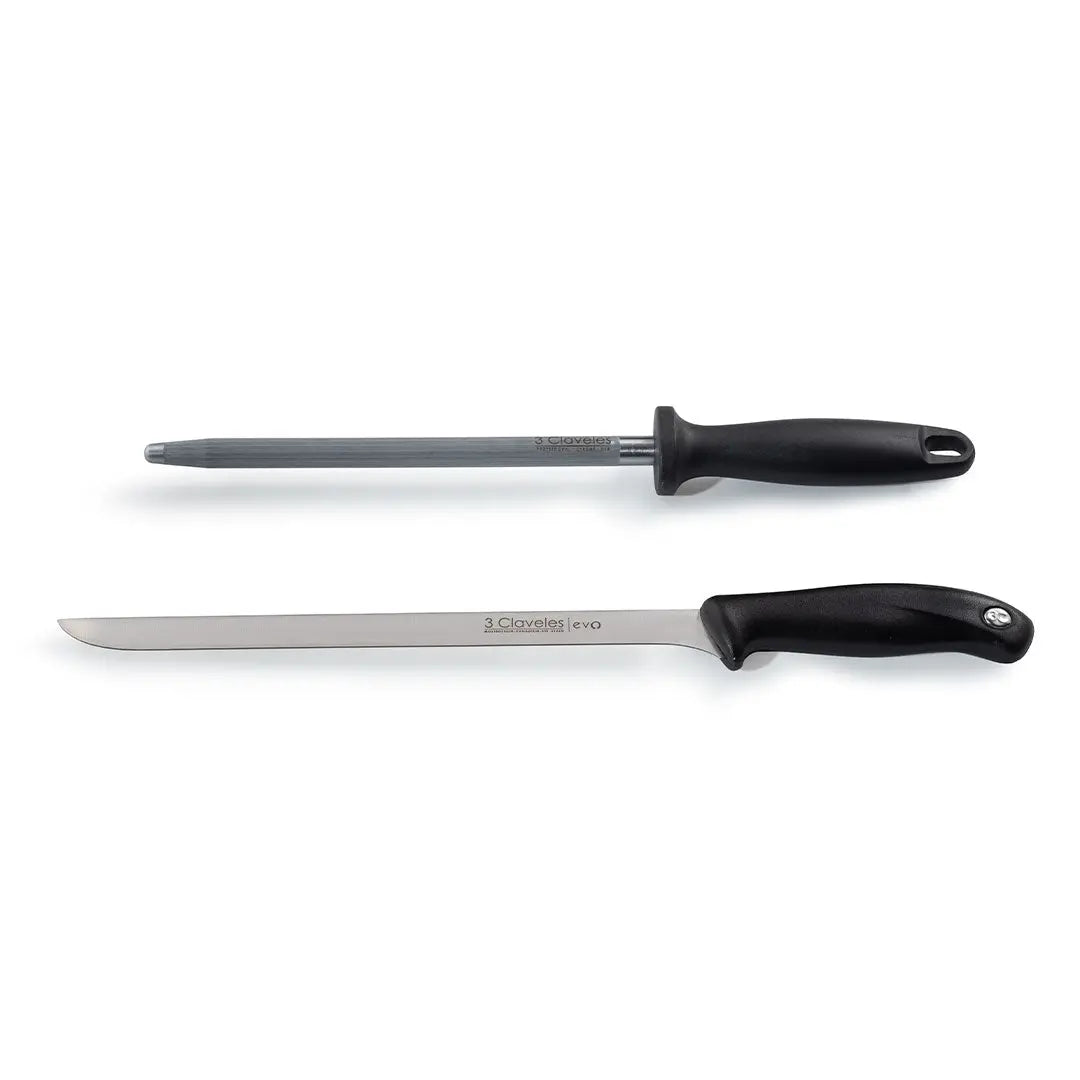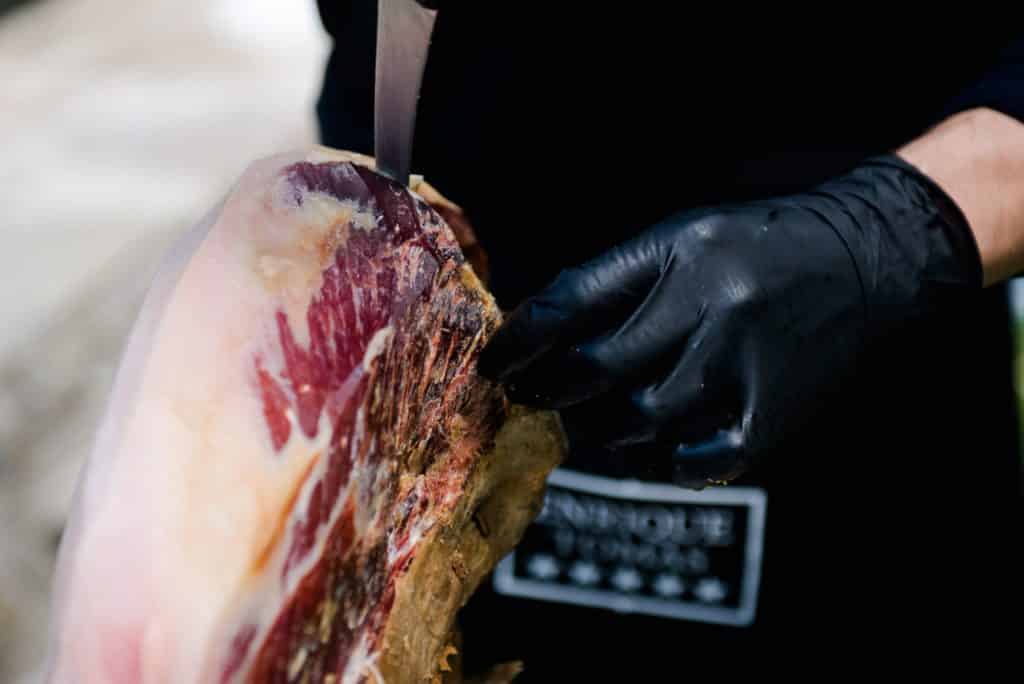
How to cut a Paleta-Ham shoulder
Are you trying to figure out the trick? You no longer need to worry because at Enrique Tomás, we will explain it to you in detail so you can do it yourself. And if, after trying, you still can't manage it, bring us your shoulder,
We'll prepare it for you in individual packs so you only need to open them and enjoy!
How to Carve an Iberian Shoulder at Home
The first thing you need to do is make sure you have everything you need, which means you need to have a ham holder, a ham carving knife, a boning knife, and a knife suitable for removing the rind. And finally, the sharpening steel or honing rod, the rounded tool with which you can sharpen your knives to cut perfectly.

Buy Premium Professional Rotating Ham Holder

Jamón knife and grindknives kit
If you have everything ready, it's time to place the shoulder on the ham holder. In bars and restaurants, it's placed with the trotter facing upwards to serve the meat of the "maza" (front part), which is more tender, followed by the "contramaza" (rear part), which is more cured.
However, at home, you don't have to do it this way if you don't want to. It depends on your intended use and which part you prefer. If there are only a few members at home, it's advisable to place the trotter down. This way, you'll enjoy the more mature "contramaza" first and then the tender "maza." If you prefer the tender meat, you can start with the "maza" and have us vacuum-pack the "contramaza" to prevent it from going bad.
Conversely, if you plan to share your shoulder with friends and family, you can place it as it's done in bars and restaurants with the trotter facing up; it's likely to be finished faster. The important thing in any case is to slice the shoulder properly, regardless of how you place it. To help you with that, as master ham carvers, we'll give you some tips to start carving your shoulder.
Tips for Carving a Shoulder
Before you start carving an Iberian shoulder, you need to know that the rind helps preserve the meat, so you shouldn't remove more than necessary. Nevertheless, keep in mind that once you open the shoulder and cut part of the top rind, this rind must never be used to cover the meat of the shoulder.
If you do so, the fat will become rancid and alter the flavor of the meat, losing all its nuances. Our advice is to cover the ham with a clean cloth that doesn't shed lint.
You need to pay attention to the thickness of the slices; they shouldn't be too thin or too thick. What's the trick? Remember that moderation is key. In other words, the knife should gently slide under the slice.
If you follow this advice, you'll experience the Iberian oil melting in your mouth upon contact with the warmth of your palate, and the flavors will penetrate your taste buds. Also, keep in mind that the correct cutting direction is towards you, but be cautious not to cut yourself.

Gradually, you'll finish carving your shoulder, and it's important that as you continue slicing, you use the boning knife, the smallest one, to cut the meat around the bone and gradually separate it. The slices you cut will come off easily.
When the bones hinder you from obtaining more ham slices, it's time to turn the shoulder over and carve from the other side.

Difference Between Carving a Shoulder and Carving Ham
The method and steps for carving ham or shoulder are the same. The only difference that may affect is the size of each. The shoulder corresponds to the front leg of the pig and is therefore smaller in size than the ham, which corresponds to the hind leg.
In this sense, it may affect especially when choosing the ham holder. You might need a smaller ham holder to carve your shoulder compared to carving a ham. However, many of the ham holders available on the market are adaptable to the size of each piece.
In the following video, discover how to carve an Iberian shoulder step by step:
As easy as it may seem, we know it's very difficult to do, and only true master ham carvers can make the most of each piece. If you see that there's still a bit more meat left on your shoulder but you can't continue, bring it to any of our Enrique Tomás establishments.
Our top specialists will finish the job for you, whether you bought your shoulder from one of our stores or not. Once we're done, we'll prepare it in sliced and vacuum-sealed packs that you can keep for up to three months.
When you want to enjoy an authentic Iberian shoulder, all you need to do is open one of your packages, let the meat breathe for a moment, and then you can enjoy its flavor just like the first day!
Now that you have all the information at hand, are you ready to start carving an Iberian shoulder at home? We hope the answer is yes, so here's a recommendation with the best ham in the world and shoulders!
Head to our online shop and discover all the formats of hams and shoulders.




